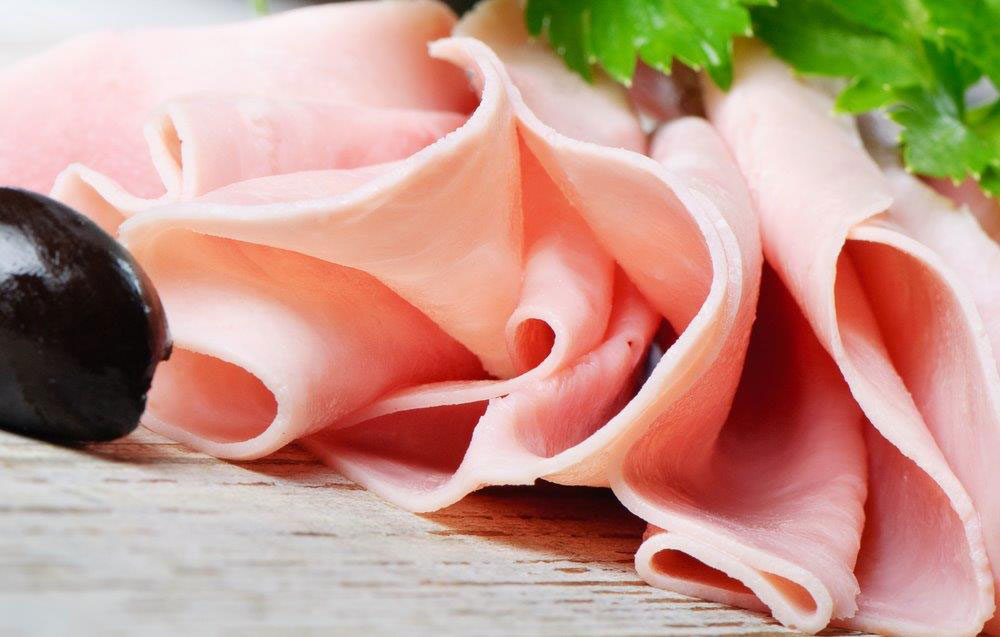Applications - Cooked cured ham
Ham products constitute a major portion of cured meat volume and represent a major contribution of dietary sodium, containing in excess of 1000mg/100g.
Replacement of NaCl by SOLO® low sodium sea salt can significantly reduce the sodium level while preserving consumer acceptance.
Function:
Salt provides taste, texture and colour, affects water binding/yield and serves as a preservative.
Salt is the most important factor in developing a cured meat flavour, more so than nitrite or sweetener. It increases perceived sweetness in ham and there is a synergistic effect between saltiness and sweetness.
Another important factor is juiciness, flavour and juiciness in ham are interrelated. Salt enhances the retention of juiciness through cooking, benefiting flavour as well as yield. Salt, along with phosphates, improve water retention by enhancing protein hydration. NaCl increases the net charges on the protein structure, helping to unfold and expose the protein surface by binding water. Salt shifts the isoelectric point to a pH of near 4.0, increasing the net negative charge at higher meat pH, attracting more water and thus increasing water holding capacity.
An optimal salt level of 2.5 - 2.8% is required to obtain maximum yield, juiciness and flavour quality.

Replacement
The appropriate level of replacement of NaCl by SOLO® is related to the level of water addition (pump) and other formula factors such as sweetener and fat content.
Replacement ratios of 1:1 at 2.5% finished level of salt, yields an acceptable flavour in boneless ham pumped to yield only 100% of green weight. Less than 1:1 is required for fully pumped, water added ham.
Brining
Pumping pickle using SOLO® can be prepared by using sodium chloride brine tables and salometer formulae as the specific gravity/solution concentration relationship are nearly the same.
As KCl is not as soluble as NaCl at low temperatures, it is recommended to prepare SOLO® brines in batches and not in automatic brine makers used for NaCl to assure consistent Na/K ratio. There will be a temperature drop when dissolving SOLO®, caused by the strong negative heat of solution of KCl.
The solubility rate of SOLO® is approximately 4 times that of pure dried vacuum salt.

